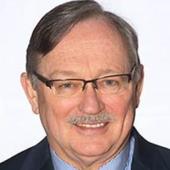A World of Twenty-Year Cycles?
Could it be that, every 20 years, a new generation sets out to shape the world?
September 3, 2008
Could it be that, every 20 years, a new generation sets out to shape the world?
In a burst of creativity after the Second World War, a war that caused so much devastation, and in recognition of the Holocaust, world leaders established international institutions to help bring order and stability.
The institutions that were created — the United Nations, the International Bank for Reconstruction and Development, the IMF — indeed have served the cause of peace and prosperity. In Europe, the foundations of the European Union were laid by great men like Jean Monnet and Robert Schumann.
By 1948, the international community agreed on the Universal Declaration of Human Rights based on values of freedom, democracy and the rule of law that have helped determine our policies.
Twenty years later, the 1968 generation — praising youth culture and rejecting the old order that had led to wars in Vietnam and Algeria — challenged the tenets of capitalism and the monopoly of power by the state. Students rioted in Paris, and in Germany an extra-parliamentary opposition demanded grassroots, representative government.
At times, the youth movement spilled over into terrorism, including the Red Brigades, the Rote Armee Fraktion, the Baader-Meinhof Gruppe and others that kidnapped and killed businessmen, bankers and politicians in their violent attacks on the post-war order.
The grassroots political movement fostered by this generation prevailed finally via the rise of powerful NGOs dedicated to tackling such challenges as human rights, global poverty and the environment. In some countries, the 1968 generation also managed to become a significant political party, as evidenced by Germany’s Green Party.
By 1988, the communist system was under pressure. Standing near the Berlin Wall at the Brandenburg Gate in Berlin, President Ronald Reagan called on President Gorbachev to “tear down this wall.” Change was coming with Gorbachev’s Glasnost.
Soon, there was a revolution for freedom in Eastern Europe. When the Berlin Wall fell, Europeans and Americans alike were all liberated from the Cold War conflict that had presumably assured their mutual destruction.
Back then, almost everyone imagined that there could be a new world based on the widely cherished values of democracy, human rights and the rule of law.
That this charming storyline was not so straightforward even back then was evidenced by the economic — but not political — self-liberalization of China. Beyond China, quite a few of the other “emerging markets” in Asia and elsewhere at the time were struggling with financial crises.
Now in 2008, 20 years later, the world has learned how elusive the achievement of peace would be. We have come to understand that peace did not break out with the end of the Cold War as many had hoped.
A more sober-minded look back at the 1990s makes this plain. Triumphalist rhetoric notwithstanding, these were years very much marked by civil wars and tribal genocides.
Together with the continuing Palestinian-Israeli conflict and threats by rogue states, notably Iraq and North Korea, these conflicts sabotaged the dream that peace would follow the Cold War.
As conflicts piled one upon another — ethnic cleansing in Bosnia, genocide in Rwanda, civil war in Sierra Leone and Liberia, Al Qaeda terrorism against the United States, war against the Taliban in Afghanistan, regime change in Iraq, Islamic uprising in Chechnya, and of course the genocide in Darfur — it became more and more difficult to envision a world without conflict.
After the 9/11 attacks in New York and Washington, the Bush Administration promulgated its National Security Strategy of the United States, emphasizing a predominantly unilateral foreign policy path, strengthening the military and defending U.S. interests.
Now, after the Georgian-Russian military conflict of August 2008, the world has come full circle. For all the hopes about global integration triggered by the peaceful competitive spirit of the Beijing Olympics, we are back to politics as usual.
Except for that the U.S. government is learning that its power status in the world has been cut back down to size far quicker than most Americans had hoped for — or than most Washington strategists of either political stripe are willing to admit.
In the ultimate analysis, all those 20-year cycles are really with us today — and in pressing need of maintenance or reform. That is certainly true for the legacy of 1948 — the UN, World Bank and IMF.
The essence of the 1968 conflict — intergenerational disputes over domestic approaches to economic and social policies — also lurks uncomfortably, only this time the dispute is going to be over the fairness and affordability of benefits.
The essence of 1988 — shedding outdated patterns of systemic conflict at long last — continues in its own way, with the continued self-liberation of former developing countries.
Viewed from that perspective, we have lost the luxury of the past — when big issues “swam” to the top only every 20 years, while others (seemingly) remained stable. Today’s world is really one of globe-spanning synchronicity, politically, economically, socially and strategically.
Takeaways
We have come to understand that peace did not break out with the end of the Cold War as many had hoped.
For all the hopes about global integration triggered by the peaceful competitive spirit of the Beijing Olympics, we are back to politics as usual.
The grassroots political movement fostered by the 1968 generation prevailed finally via the rise of powerful NGOs dedicated to tackling serious challenges.
Today's world is really one of globe-spanning synchronicity, politically, economically, socially and strategically.
Read previous
Little Giants
September 2, 2008
